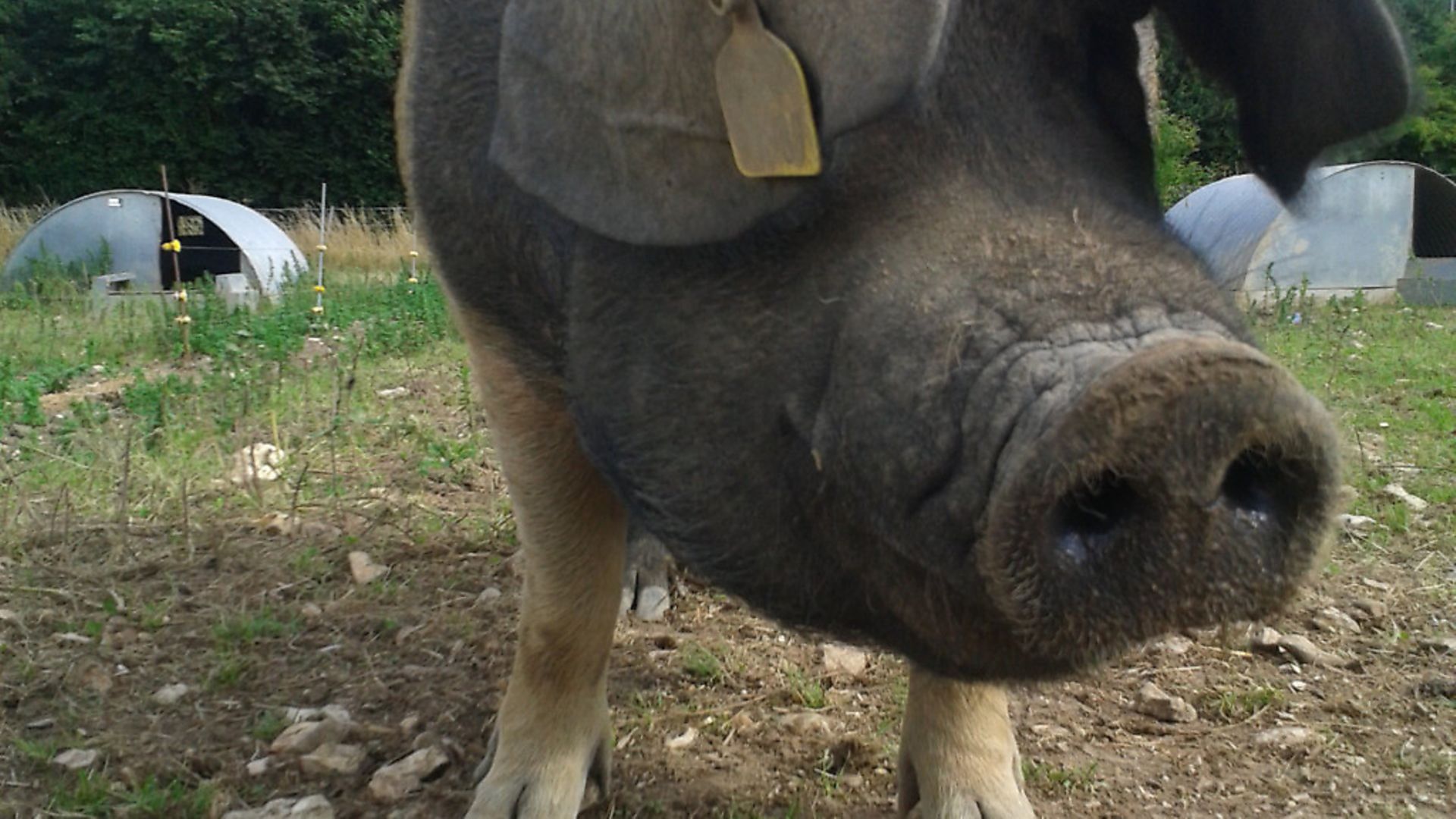Our guide to getting your lice and mite treatment up to scratch

Itchy pigs
External skin parasites are a relatively common concern for smallholder pigs. Lice and mites are the two most common parasites that cause itchiness and they can be problematic to control in a herd. They are mostly spread pig-to-pig, so proper quarantine and isolation of incoming animals is the key to preventing an introduction of disease.
Lice
The louse that typically affects pigs is called Haematopinus suis and it is impressive in size. These creatures can be seen by the naked eye crawling around the hairy skin of a pig like small spiders. Eggs can survive in bedding for four weeks, but adult lice only survive a few days off the pig. Affected animals are intensely itchy and restless and because these are blood-sucking lice they can also transmit some infectious diseases. Haematopinus suis is a very host-specific parasite, meaning that it can only live on pigs and cannot infect other species.
Injectable worming products can be used to treat lice infections; however, repeat treatments are sometimes required and therefore veterinary advice should be sought. Some of these products have long meat withdrawal periods, which will delay the animal going into the meat chain, so always check this if you are rearing pigs for slaughter. Furthermore, because the lice are spread by pig-to-pig contact, the whole herd needs to be treated to eradicate the problem.
Cleaning and disinfecting the environment is also an important part of lice control. Leaving open ground unoccupied in the summer for a period of weeks can help to break the infection cycle by desiccating the parasites in the environment.
Mites
Mange in pigs tends to start on the head, colonising the ears and causing headshaking. Infection then spreads to the body, tail and legs. Severe crusting will develop around the ears, behind the elbows and there may be a general discolouration to the coat.
Mange is intensely itchy and is also sometimes associated with an allergic disease. Pigs that have been previously infected may become sensitised and if exposed to the mite again have a severe reaction. Lots of red spots appear over the body and take weeks to disappear. The allergic reaction is terribly itchy and can cause the pigs to lose weight and self-traumatise. Another relatively common consequence of mange is ‘greasy pig’ disease. This is a bacterial infection that can occur secondary to skin damage and is particularly common in young pigs.
Treatment of mange is very similar to that of lice infestations, but veterinary assistance should be sought if a pig has an allergic reaction to the mites or a suspected bacterial infection. It is important to review your parasite control plan at your annual veterinary health plan visit.
Quarantine, quarantine, quarantine…
If your herd is mite and louse free, it is very desirable to keep it that way. Any new stock purchased or pigs returning from shows should be isolated for a minimum of three weeks to monitor closely for any signs of disease. It may appropriate to blanket treat for external parasites during quarantine. If possible, always try to purchase stock from mange- and lice-free holdings.
Image(s) provided by:
Archant








